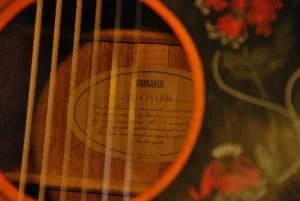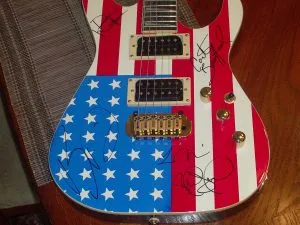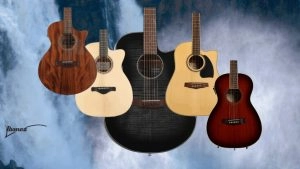One of the first minor scales you’ll learn on your guitar journey is the A minor scale because this seven-note scale doesn’t include any sharps or flats. That means it’s a pretty straightforward scale to learn.
You can easily learn this scale from just the root notes, but to fully understand the scale, you need to immerse yourself in the scale formula and scale pattern — and develop a muscle memory across the entire fretboard.
Use this article to master the seven notes and the music theory behind the A minor scale, and it will make learning other minor key scales significantly easier.
Notes Of The A Minor Scale On Guitar

The A minor scale is an important scale made up of the following seven notes: A, B, C, D, E, F, G, and A (octave).
Like all minor scales, this scale starts on the root note (the first note) and goes up by a whole step, half step, whole, whole, half, whole, and whole. Remember: A whole step is two frets on the fretboard, and a half step is one fret.
For those beginner guitar players who have an understanding of the various major scales, you might notice that the A minor scale uses the same notes as the C major scale, but the root note is a minor third below the C. We’ll cover more of that later in this article.
Intervals Of The A Minor Scale

To fully immerse yourself in the A minor scale, it’s important for all guitarists to understand the intervals of the scale. Intervals are the different parts of the scale that help describe the notes and make sense of chord building.
- A: The root
- B: Major 2nd
- C: Minor 3rd (if this were the A major scale, the third would be major — C#)
- D: Perfect 4th
- E: Perfect 5th
- F: Minor 6th
- G: Minor 7th
- A: Octave
Now, when you see a song calling for an Am7 chord, you know that it’s going to be an A minor chord (A, C, E) along with a minor 7th — a G.
I’m a big proponent of running all scales starting from various intervals instead of just from the root. This will sound drastically different, but it will help you gain a better understanding of the entire scale and the chords within it.
How To Play The A Minor Guitar Scale
The best way to play the A minor scale on the guitar is to lean on the CAGED minor system. The CAGED system is a scale formula used in both major and minor scales. It’s an acronym for the common chord shapes that are used throughout five regions of the fretboard.
When you learn all five positions of the system, you’ll be able to play the A minor scale — and all other minor scales, theoretically — across the entire fretboard.
A Minor Guitar Scale Positions
We’ll start with the open position of A minor, which is where most beginners start because of the root note locations. Practicing with the diagrams in each section is key to learning each of these scale positions.
Remember, 1 stands for your index finger, 2 is your middle finger, 3 is your ring finger, and 4 is your pinky. The string farthest to the left is the low E string; and the string all the way to the right is your high E string.
Open Position (A Position)
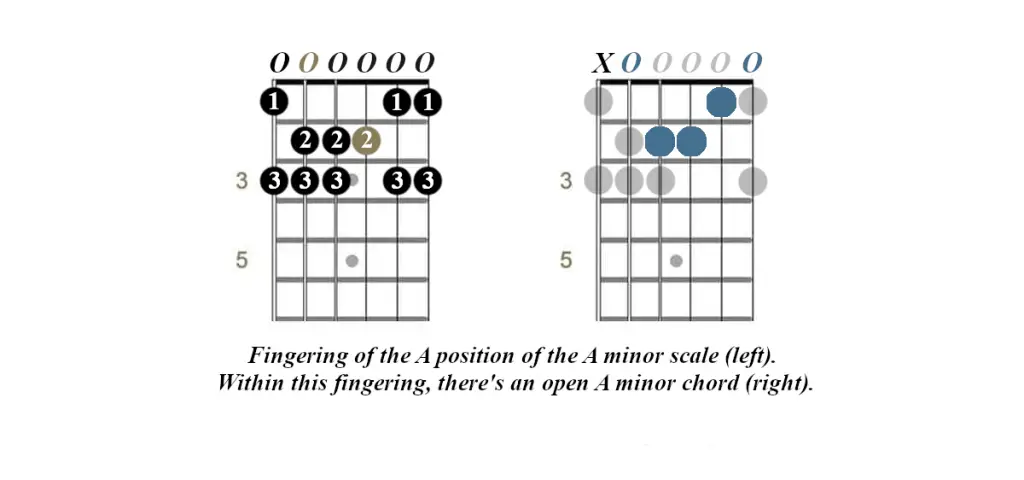

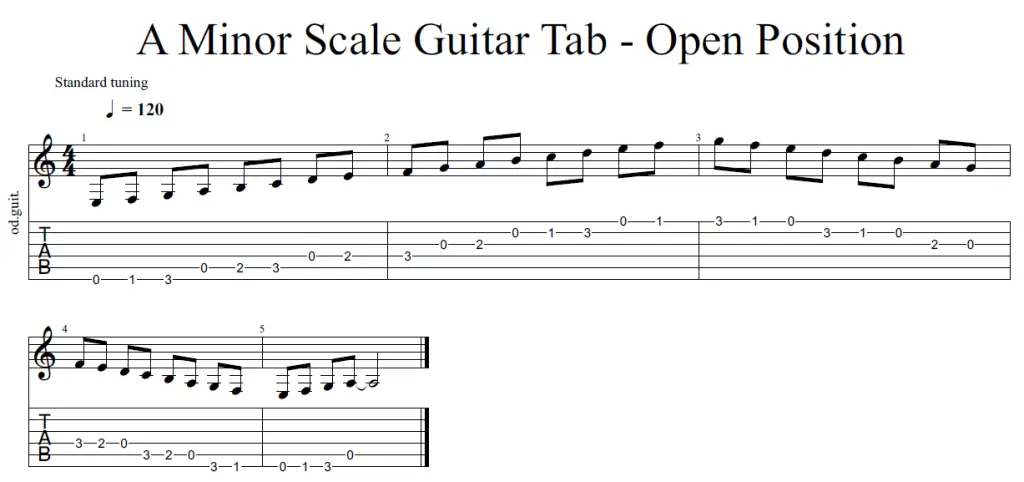
Position 1 (G Position)
The G position is one of the trickier positions that require lots of practice but one of the more useful for the scale since it utilizes frets in the middle of the fretboard.
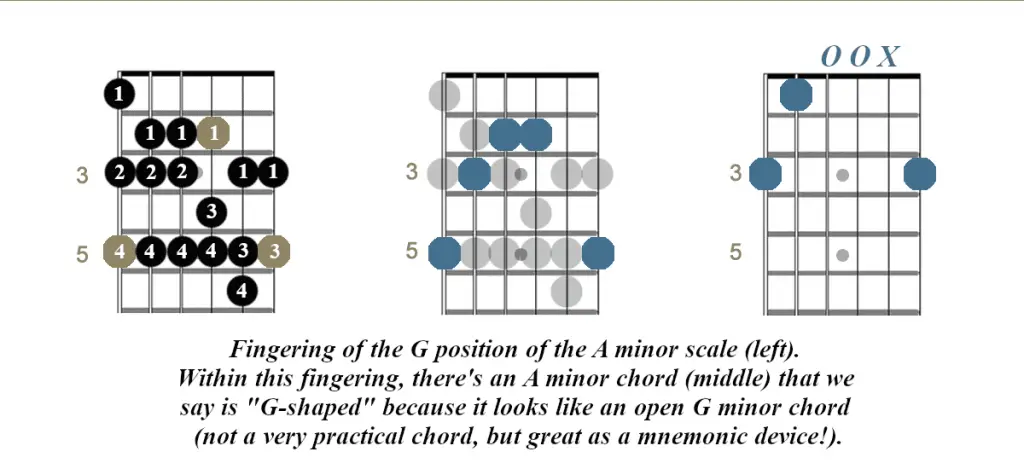

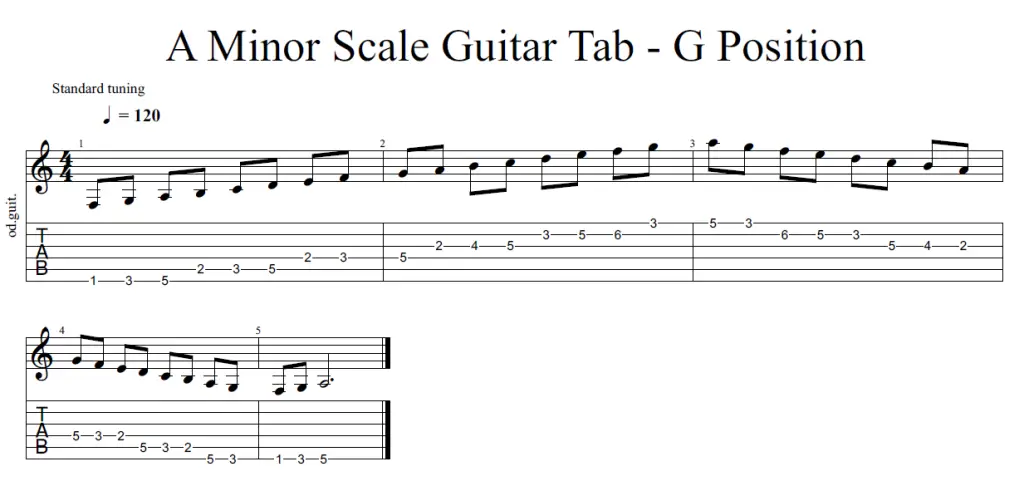
Position 2 (E Position)
The E position is one of the easier because it’s essentially putting your hand in a barre chord position.
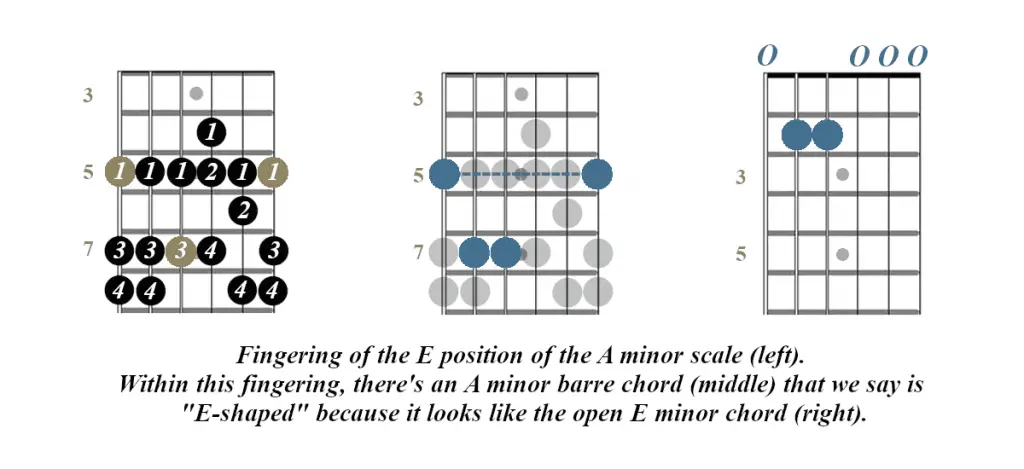

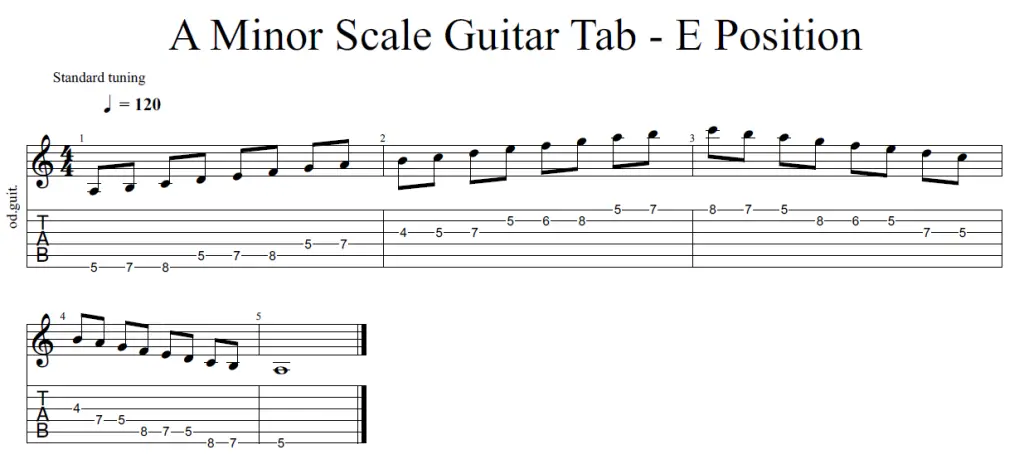
Position 3 (D Position)
The D position almost stretches your hands past the higher notes that are one octave higher than your A minor position.
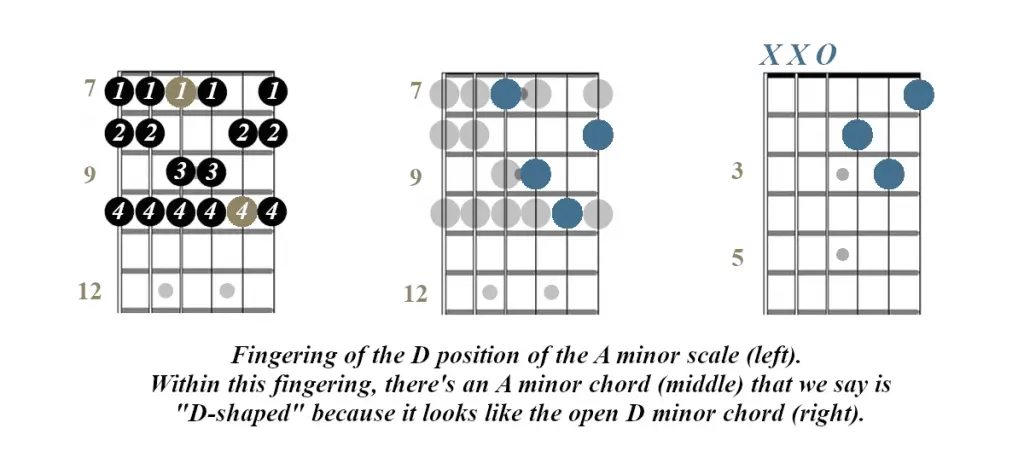

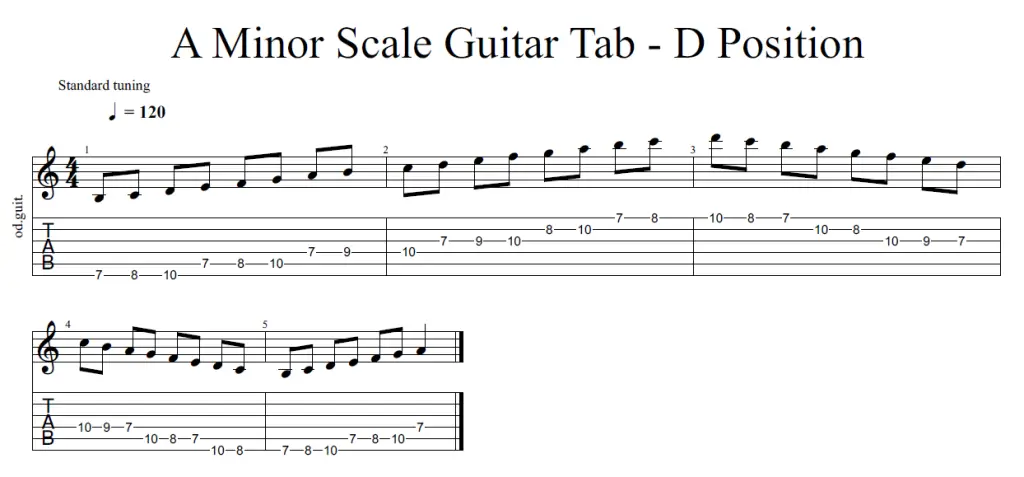
Position 4 (C Position)
Near the top of your fretboard is the C position. Learning this position can help you with soloing in A minor.
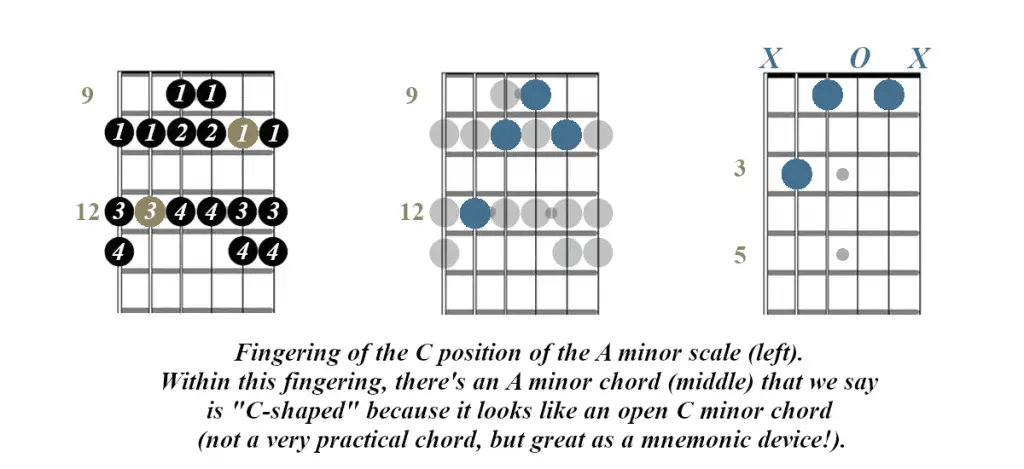

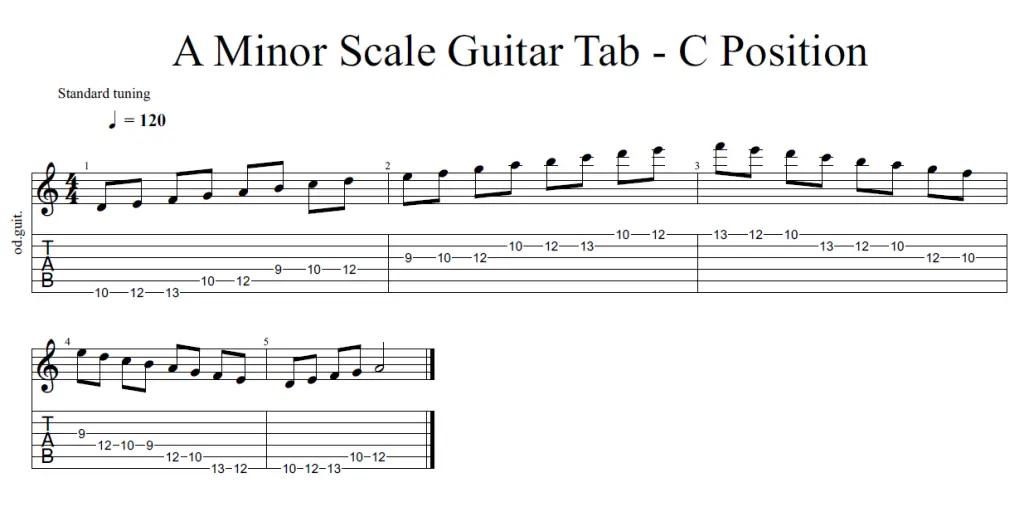
Position 5 (A Position)
The fifth position is an octave higher than the root notes at the bottom of the fretboard. It’s the same formula as the open position.


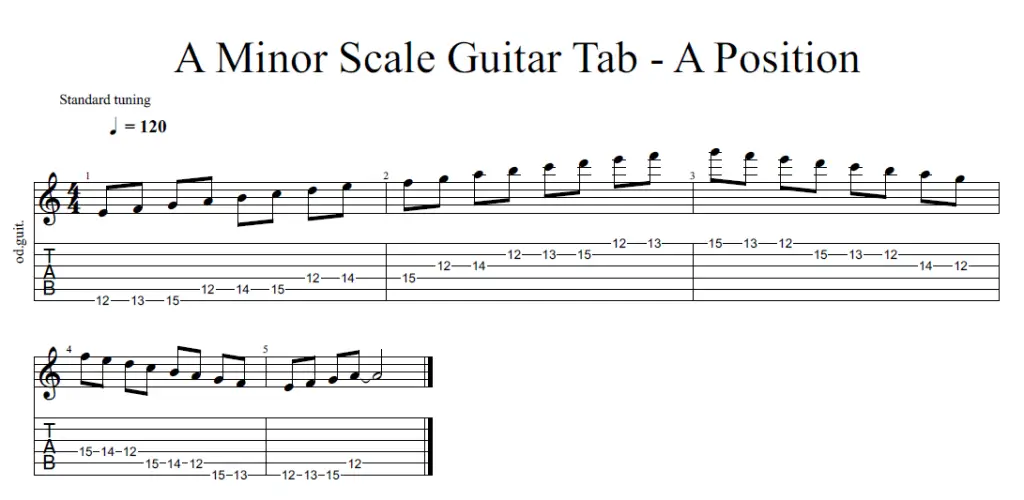
A Minor Single Octave Scale Patterns
I’m a huge fan of CAGED positions for learning scales, but they’re not the easiest to learn. That’s why I always start with single-octave scale patterns — first at a slow tempo before speeding things up.
Learn more about A minor single-octave scale patterns.
Chords In The A Minor Scale
Since A is the relative minor scale of the C major scale, both scales have the same chords.
Check out our article on the C major scale for the most common voicings of these chords and to see the main difference.
A Minor Scale Songs On Guitar
Here are a few popular songs for the guitar that are written in A minor. Go put that scale to the test!
“Stairway to Heaven” by Led Zeppelin
This is one of the most iconic guitar songs of all time. (And it’s actually a little too popular to play for some guitar shops!)






